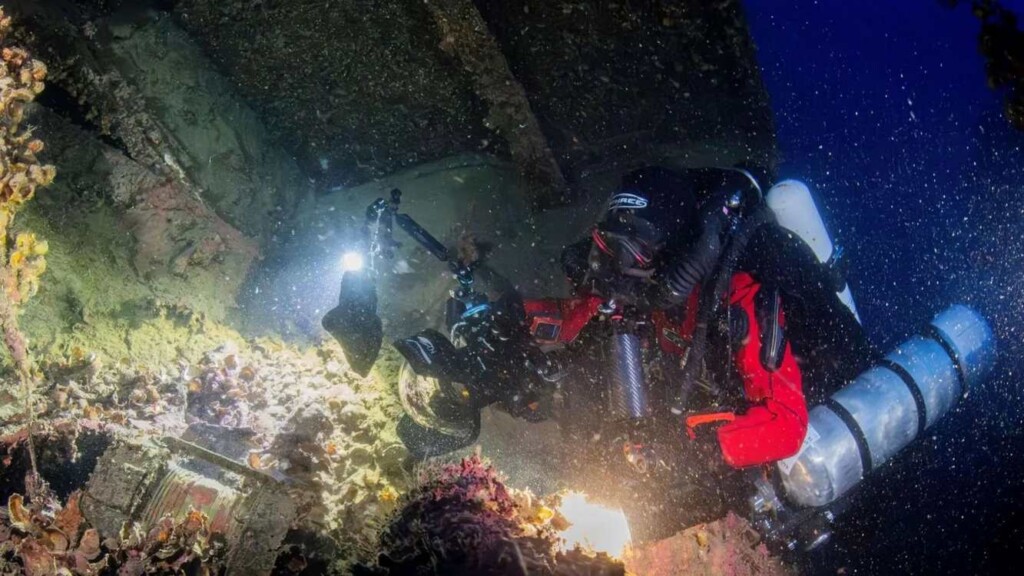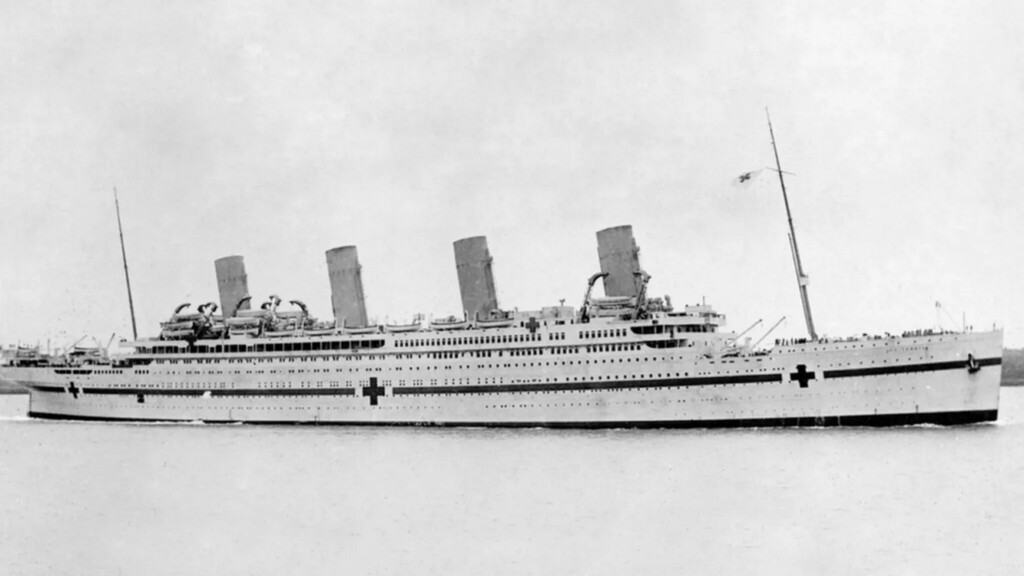
A team of deep-sea divers has recovered a slew of artifacts from the wreck of Titanic’s sister ship, a vessel sunk by a mine during the First World War.
Called the HMHS Britannic, it was one of three Olympic-class ocean liners built by the White Star Lines company in the early 20th century, with the others being HMS Titanic and HMS Olympia.
The dive was organized by British historian Simon Mills, founder of the Britannic Foundation and owner of the wreck, and saw 11 professional divers enter the Aegean Sea in May and conduct a survey of the ship for artifacts they might recover.
Details were kept secret until last Monday when images of what was recovered were published by the Greek Ministry of Culture.
Included among the items were a porcelain wash basin, binoculars, a portside navigation lamp, tiles from Turkish baths, equipment from first and second-class cabins, and most excitingly, the lookout’s bell.
Connected to air balloons, they floated up from the depths to be secured by waiting crews who packaged them up for transfer to a conservation center in Athens.

Once cleaned of marine organisms, they will go on display in the war section of the National Museum of Underwater Antiquities in Piraeus.
The loss of Titanic would have been a terrible one for the company’s fortunes, but was likely less than the confiscation and subsequent loss of HMHS Britannic by the British Government for use as a hospital ship in World War I.
SHIPWRECKS AND THEIR TREASURES:
With one sunk by an iceberg, and the other by a German mine, and with several other vessels lost during the war that had also been “requisitioned” for the war effort, the company had to conduct a post-war triage until three liners obtained from Germany as war reparations were given over to White Star Lines as something approaching compensation.

Thankfully, and quite unlike her more famous sister ship, the sinking of Britannic claimed only 30 of the more than 1,000 souls onboard; the others escaping via an adequate number of life boats.
Today, the vessel is the largest intact passenger ship on the seabed in the world.
SHARE This Underwater Effort To Resurface The History Of This Great Liner…


Leave a Reply